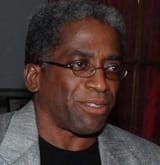Craig Settles: Libraries and Telehealth on the Vanguard for Broadband
Libraries can do for telehealth what they did for broadband: Provide low-income folks with access to digital and healthcare literacy.
Craig Settles

Libraries are the vanguard of a forces working to close the “healthcare gap.” The FCC’s E-rate broadband grant program for libraries and schools, and the Emergency Broadband Benefit broadband subsidy, collectively are providing over $10 billion immediately. Libraries can leverage these funds to deploy telehealth and broadband to attack the heathcare gap.
Many libraries are moving toward telehealth. Three libraries in Delaware have recently installed telehealth kiosks, Seaford, Milford and Laurel. The Pottsboro, TX public library rolled out their telehealth center in January this year. Several library’s around the country are developing digital navigators programs to facilitate telehealth.
Lucinda Nord, Executive Director of the Indiana Library Federation says, “In 2020, many courts required virtual online attendance. To help patrons, librarians learned effective virtual meeting skills that will help us expedite telehealth. We partnered with state agencies to train over 1,000 library employees to help residents apply for unemployment, SNAP, and health coverage.” In the process, these libraries acquired resources critical for telehealth.
The healthcare as well as the broadband gap exists in the rural areas, but the media, policymakers, and politicians have selective myopia when it comes to urban broadband and by default, telehealth.
Libraries and telehealth attack the healthcare gap
There are over 12 million homes in urban America that cannot get neither broadband nor telehealth. 75 percent of those are homes of African-Americans or other people of color. Countless millions of others homes technically have broadband, but in reality it is a pathetic attempt at coverage that lacks the strength to carry telehealth into enough homes.
Libraries can do for telehealth what they did for broadband: provide low-income folks with access to the technology, drive adoption, and facilitate digital and healthcare literacy. With FCC funding plus the Institute of Museums and Library Services’ $200 million, libraries get a running start on making a difference. Urban libraries have to push hard for grant equity!
Telehealth isn’t just chats with physicians, it’s using intranets and Internet networks to do everything medical that gets you and keeps you healed. Telehealth brings digital equity to the healthcare gap. This gap is abundantly prevalent in among people of color.
Analysis by the Kaiser Family Foundation show 33 percent of Hispanic women and 31 percent of African-American men don’t have a regular doctor. According to the CDC, six out of 10 people in the U.S. suffer from a chronic disease, four out of 10 people suffer from two. Diabetes is 60 percent more common in African Americans and the men are 50 percent more likely to get lung cancer. Twice as many African Americans would die as all the other ethnic groups combined.
Libraries exist to help
FCC started the Emergency Broadband Benefit of $3.2 billion, which will be available until expended or until six months after the COVID-19 emergency declaration expires. The EBB provides eligible low-income households with a monthly $50 discount for broadband service from participating providers, as well as a one-time $100 discount on an internet-enabled device.
EBB recipients are potential telehealth users and patrons needing training and digital literacy. “At a minimum, we know libraries will want to have the information handy to respond to any requests,” says Larra Clark, Deputy Director of the Office for Information Technology Policy at the American Library Association.
Digital navigators are a major force in moving people over the digital literacy hurdle, and often they are hired from the disadvantaged neighborhood that the libraries serve. Shauna Edson, Digital Inclusion Coordinator Salt Lake City Public Library, And she is partnering with the National Digital Inclusion Alliance shaping a national digital navigator program.
“Locally, our digital navigators problem solve and help connect people to the appropriate free or low-cost resources such a Chromebook or a laptop,” she says. “We have mostly beginner computer users wanting to use Zoom for workshops and communicating with friends and families. There are some organizations focusing on this navigator model just for telehealth support.”
Decide navigators, expect quite a few large libraries will seek funding to convert study rooms into telehealth rooms at least for part of the week, and small libraries are considering buying telehealth kiosks to compensate for the limited spaces. Wi-Fi hotspots became particularly popular during the pandemic and telehealth will make them even more so.
Quite a few libraries will want to tap into these grant programs to build out their physical space to support telehealth, and also boost their broadband capabilities. Micheal McKerley, CTO at ENA says, “Libraries need that data traffic to be segmented and not be sniffable by hackers. That segmentation may or may not require new broadband infrastructure, but it may need a network assessment. Even you don’t need new equipment, you might need a re-design.”
“A lot of libraries right now are struggling to keep up with everything that’s going on,” says Henry Stokes, Library Technology Consultant at Texas State Library and Archives. “But as libraries move forward and they see their peers push out telehealth initiatives, we’ll see healthcare become even prominently featured in libraries. Telehealth is such a great fit!” And telehealth will drive broadband like there’s no tomorrow.
Craig Settles conducts needs analyses with community stakeholders who want broadband networks to improve economic development, healthcare, education and local government. He hosts the radio talk show Gigabit Nation, and is Director of Communities United for Broadband, a national grass roots effort to assist communities launching their networks. He recently created a guide to help librarians uncover patrons’ healthcare needs, create community health milestones and effectively market telehealth. This piece is exclusive to Broadband Breakfast.
Broadband Breakfast accepts commentary from informed observers of the broadband scene. Please send pieces to commentary@breakfast.media. The views expressed in Expert Opinion pieces do not necessarily reflect the views of Broadband Breakfast and Breakfast Media LLC.








